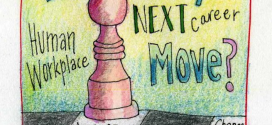Introduction
Action learning is the process of learning by reflecting, questioning and gaining insight through our own actions. The basic premise of action learning is that we learn not only by reading, listening or acquiring knowledge, but also by doing things differently. Going one step ahead, we need to learn from what we do, to understand what works or does not work and learn from our own successes and setbacks. Stopping to reflect, gaining insight and trying a different path in future, is thus the basis of action learning.
The two essential elements in action learning are that it involves people who work together. Secondly, the group requires to interact at regular intervals, building opportunities and space for people to reflect, question and become conscious of their actions, thoughts and beliefs. When applied to work, action learning implies working and learning, simultaneously.
This paper presents the process of initiating and managing an Action Learning intervention that was an endeavor to develop a learning community in a development cooperation office of the British Government, functioning in India. The intervention aimed at enabling the locally recruited Indian staff to develop appropriate personal and work-related skills, and initiate processes that would create shared understanding and teamwork amongst employees from two diverse cultures. It concludes with an overall assessment of the intervention and my role as a “set adviser”.
Background
Social Development Corporation (SDC)** is responsible for managing programs of development activities in India. It is staffed by a mix of professionals drawn from U.K. and Indian staff who are recruited locally. The administrative staff are placed on a common grading scale designated as Development Officer (DO). Of the total administrative staff, SDC had seven at the DO I level (of which six were expatriates). There were five at the DO II level and six at DO III level (who were local staff). Since inception i.e. in 1995, SDC had invested considerable time and resources in staff development, particularly in development of its local staff. In addition, SDC had set itself the objective of ‘localizing’ few positions at the DO I level. It had recognized the need to train and equip the staff at DO II and DO III levels to assume higher responsibilities.
A training need assessment based on feedback from potential participants and their line managers indicated that there was need to train the DOs on managerial and personal skills. Since the training was to involve a large number of staff who could not be spared from their work for a long period of time, it was decided to implement the program through a variety of mechanisms ranging from traditional training to carefully designed Action Learning. The basic framework to deliver the program was through short workshops interspersed by action learning groups, which would focus on live problems/issues drawn from participants’ day-to-day work experiences. The program was designed for implementation as a “process”, and its contents were to be developed as the program progressed, using feedback from trainees and line managers. It was implemented over a period of four months and was coordinated by one of the line managers. The Director of SDC enthusiastically supported this program.
The Action Learning “Set”
The group that formed the action learning “set” comprised of eleven women and one man. Most of them were post-graduates in social sciences and had previous work experience ranging from 2 to 12 years. Their broad role responsibilities were administering, managing and monitoring of projects that were aided by the British government. They were required to provide professional support to on-going aid projects, and assist in developing new programs and research.
Action Learning Intervention
Diagnosis
Following the decision to go ahead with action learning (AL), a two-day program was conducted for DOs by an external trainer from UK. The aim was to develop familiarity and understanding of each other, develop group cohesion and explore and define organisational and interpersonal problems and issues. This event was important in building the sets for subsequently working together.
After my initial meeting with the Director, I interacted with each line manager, individually. The purpose of these meetings was to understand the organization’s goals and tasks in addition to the expectations that line managers had from the DOs. The interactions initiated the process of reflection amongst line managers about the role of DOs and also facilitated them in appreciating their own role in developing their subordinates. Although line managers felt there was need to train the DOs, majority was skeptical about the outcome of the AL process. I had several interactions with line managers during the entire process, individually and in a group. The aim was to involve them in the exercise and instill in them the feeling that they played a critical role in achieving results from this process. We decided to divide the group of 12 into two subgroups and I was to meet each “set” for 3-4 hours, once a week.
Action
Phase-1 Meetings 1-2
The first meeting began with a degree of apprehension because of the novelty of the situation. Group members were invited to share their feelings and views about their role, their career development plans and how they would like to enhance their effectiveness. After the initial hesitation and discomfort of talking about sensitive issues in the presence of colleagues, they gradually began opening up.
The discussions focused on individual issues and concerns, which also proved to be cathartic to some extent. A great deal of time was spent going back and forth on line managers’ indifference and group members’ feelings of helplessness. There was also a feeling of resentment at the apparent waste of time during these meetings since no clear solutions or suggestions were forthcoming from me. The second meeting particularly culminated in a feeling of confusion and helplessness within both sets. The confusion got compounded after interactions with the line managers who saw little merit in this form of learning. They found it difficult to reconcile short-term needs with long-term objectives. However, two of the six managers tactfully influenced the group members to appreciate that learning cannot be immediate in the process adopted and that the line managers role is significant in facilitating and supporting development of DOs.
The first two meetings with both groups suggested that DOs were not clear of their role responsibilities. There was low level of communication and understanding amongst each other and between them and their line managers, perhaps due to cultural differences. Each department worked in isolation of the other. There were few opportunities to interact, formally or informally, amongst organizational members. The group of DOs was cautious and had little faith in their ability to influence the environment or taking initiative for their own growth.
Phase-2 Meetings 3-7
Set members continued to interact both formally and informally and as the frequency of meetings increased new relationships began to emerge. The morale of the group improved when the members could collectively identify specific problems that were bottlenecks to their effectiveness.
Initially, each group had different concerns. Group I was not confident of their ability to communicate, particularly in formal work settings. Their immediate concern was to improve their presentation style and oral communication. The focus in group 2 was on work related issues. Group members sought greater clarity on ‘stages of project cycle’. During these meetings the group not only identified their areas of concern, but also developed action plans for seeking inputs/help in these areas. Each member of group 1 decided to make presentations, which were video recorded and critiqued by the internal coordinator and myself. While in group 2, one member volunteered to collect information on stages of project cycle and made an informative presentation to her set members.
In the subsequent meeting two line managers were approached by group members to facilitate a discussion on “imprest accounts”. There was a great deal of interaction and enthusiasm in this meeting. They identified areas that required in-depth understanding and clarification to function more effectively. One member from each group took the responsibility to seek additional information from available documents and line managers and present it in the subsequent meeting.
Members of both sets were unsure of their drafting skills. They decided to critique some of the existing SDC material and thereafter seek support from one of the line managers. Before the next meeting, set members met in small groups to identify their specific problems related to drafting. In the formal meeting, the line manager provided practical guidance on drafting, focusing on principles of drafting as per requirements of SDC. Following this general input, two members of the group suggested that they would circulate the drafts that they were currently working on, for members to critique. The groups also sought help of the Director who gave each member a topic to write on and painstakingly provided feedback for improving their drafting skills.
The involvement of line managers during the set meetings resulted in greater interactions at the informal level. The cultural barriers were gradually thinning down and line managers expressed greater understanding of the expectations of Indian staff. One significant realization was the “need to deal at a more personal level with my staff than being too officious and work oriented” as succinctly stated by one line manager. The set members in turn felt they had underrated themselves and their abilities, when reporting to managers from a different cultural background. They began to acknowledge their role in being passive and not exhibiting autonomous work behavior which most had practiced in their earlier jobs. The feedback from participants was gradually becoming positive. Many felt that the “program had at least attempted to address some staff development needs”. Independently and collectively the groups focused on several personal and work-related issues.
During the sixth meeting feelings of discontent once again began surfacing.
Some members felt there was need to reorganize the groups because the range of experience within the group members was too broad. While some had reasonably good understanding and appreciation of issues discussed, others had little or none, resulting in low value addition for the experienced staff. After considerable debate this issue was resolved by some of the group members themselves who emphasized the need to develop a more helpful approach and facilitate colleagues who were less experienced.
During this process some members intermittently felt the need for more structured inputs and “prescriptions”. They required clearer indications of what areas of their performance needed further development, particularly in event of their promotions. Their concern was shared with the line managers who agreed to share feedback with DOs reporting to them, on a more regular basis.
The most productive fall out from these interactions was after the sixth meeting. “Set” members gradually began to appreciate the purpose of these interactions. They realised their own role in the learning process and the responsibility they have for identifying and resolving their areas of concern. The “set” was gradually becoming a vehicle for learning – a problem-solving unit
Phase 3 Meetings 8-13
Members were becoming more comfortable and less defensive with each other. Their belief in the learning process that was adopted and their self-discipline kept the interactions on the rails, to a large extent. There was greater openness in sharing feedback and giving and seeking help from each other and with line managers. Informal interactions in the office and lunch meetings were becoming more frequent. During the ninth meeting, one member of each set volunteered to facilitate future group meetings, by rotation.
Using a structured inventory, I conducted a workshop on ‘understanding interpersonal and decision-making styles’ for “set” members, line managers, and the Director. The Director shared her profile and solicited feedback that proved encouraging for others also to relate more openly. Sharing feedback on each other’s interpersonal needs and styles further facilitated in developing understanding and cohesiveness. This interaction proved to be a turning point in the task that was undertaken. The group assumed distinct characteristics of positive feelings and growing reliance on peer networks.
Phase 4
Some personal skill development areas like assertive decision-making, managing stress and negotiating skills still remained to be addressed, as perceived by set members. There was a general consensus and great eagerness amongst DOs and line managers that a 3-day, off-site residential course would help to address these concerns.
The group of DOs along with five line managers attended the course. The methodology adopted in the program was largely experiential, including several exercises, simulations and case discussions. In addition, informal interactions through activities organized after working hours brought about greater feelings of closeness, comaraderie and well being amongst group members. They returned to work greatly enthused and comfortable with each other. Living together brought greater realization of the cultural diversity in the group. They discussed significant difference in interactive styles that had created constraints in relating at the work place. Line managers became conscious of the need for greater emotional relationships and mutual dependence amongst Indians. They also realized that their own reserve and preference for working independently was being misunderstood as being unconcerned and overly task-focused.
Phase 5
The group was becoming self-sufficient and I felt this was the appropriate time for developing a carry-forward mechanism and to withdraw from my role as set adviser. The decision was jointly taken by the group members and myself that two DOs would take up the responsibility of facilitating the learning process for a period of two months. To begin with, two volunteers were identified for the first two months and two for the following two months, taking care of a period of four months.
Reflections
The sets reached a stage of maturity and interdependence after working through a growth process typical of most new groups. There were significant growth points during the entire process. Emotions were roused more than cognitive ideas: from frustration, turbulence and certain level of chaos, some sort of reorder emerged, which they later recalled and identified as learning. There were times when the collective morale flagged and the group got caught in circular discussions of past crises, reliving emotions rather than learning from these patterns. Lack of structure had upset them and at various points they had expressed apprehension, ambivalence and disappointment.
Although the process was demanding and more testing than conventional training courses, it’s uniqueness lay in the fact that there was no one best solution to a problem and that issues could be resolved with synergistic creativity. In doing so, each person discovered his/her own strengths and also made efforts to develop new ones. Time is fundamental to this form of learning. People get to know each other, gain confidence in being themselves and grow to trust one another, which becomes a prerequisite for them to work and learn from each other. They gradually began to feel safe, admit to their emotions and mistakes, ask potentially awkward questions and put forward ideas for change without fear of being discounted or rejected.
As a set adviser my role was not that of an expert who could provide solutions, nor was it to control the process by being a teacher. I was, therefore, conscious of helping set members to understand and acknowledge their concerns, dilemmas, and strengths by asking questions and reflecting on the way the group was moving. In hindsight, as an advisor to this group, I realize that my role was multifaceted. It changed between different meetings where at times I operated as a chairman, sometimes as a catalyst and at times as an observer. It required a great deal of adaptability and ability to cope with frustration and anxiety, particularly when there was no apparent value addition from the interactions. However, with greater evidence of individuals becoming more confident of their capacity to manage, it became a very rewarding experience.
Impact of the Process
Action learning is a developmental process. Using Reg Revans’ original theory
L = P + Q
Learning results from the independent contributions of programmed instruction from material already formulated (designated as P) and spontaneous questioning, investigating and experimenting (designated as Q). In action learning, Q is the component that results in most behavior change.
While it is difficult to quantify the benefits of the AL process to participants or to the organization, I would illustrate the outcome based on the feedback of all concerned. The experience of SDC provided the participants an opportunity to integrate an understanding of and work on more effective learning processes. The explicit attention on learning-to-learn helped individuals appreciate their own learning and how this awareness could be employed in other situations beyond formal meetings. Secondly, group members developed greater understanding of each other. The increased focus on reflecting, critiquing and sharing insights improved interpersonal and behavioral processes. There was a qualitative change in relationships amongst set members as well as with their supervisors. Line managers realized the value of the DOs and their potential to take on higher responsibilities. In addition to this, participants learnt more about the organization, their specific role requirements and role of other departments. There was greater realization of the need to collaborate at inter-departmental levels and network with people from different levels and functions.
Moving Ahead
Action Learning method provides a vehicle for approaching complex business problems collaboratively with an open mind, to encourage fresh explorations and solutions to these problems particularly when traditional methods do not seem to bring about the desired outcome. This approach would be of value to managers who need to stay ahead of competition and learn what is relevant to achieving their goals. Action learning can also provide the potential for academic institutions to integrate theoretical knowledge and practice in their management development courses, thus improving their relevance to industry.
**Name of the organization is disguised
 Mindshare HR Knowledge Portal Mindshare HR Knowledge Portal
Mindshare HR Knowledge Portal Mindshare HR Knowledge Portal



